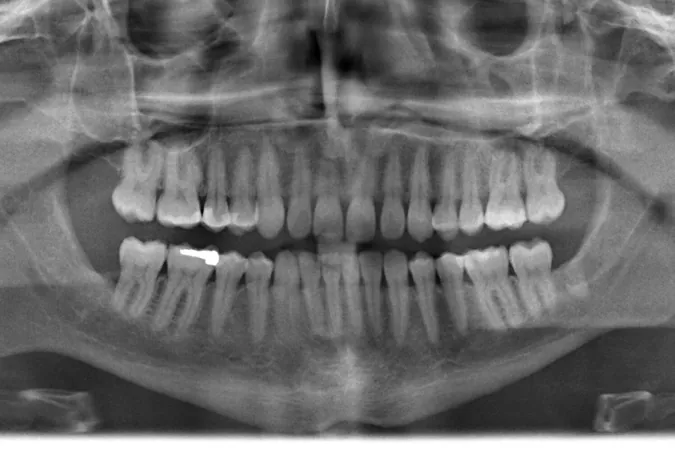
Are Annual Dental X-Rays Really Necessary? Here’s What You Need to Know!
2024-10-15
Author: Ying
If you’ve ever found yourself sitting in the dentist's chair, draped with an awkwardly heavy lead apron while feeling like it's been less than a month since your last visit, you’re not alone in your confusion. Many patients are questioning whether those annual dental X-rays are truly necessary.
In recent discussions among dental professionals, there’s a growing concern over the frequent use of dental imaging technology. Some dentists are challenging the standard practice of requiring X-rays every year, arguing that it may not only be excessive but could also pose health risks. This sentiment echoes guidelines set by the American Dental Association (ADA), which state that radiation doses from dental X-rays are typically low, but any amount can still carry a risk of adverse health effects.
This debate gained momentum after a group of Brazilian dentists wrote to the Journal of the American Medical Association (JAMA) calling out the dental industry for being too influenced by clinic economics. They expressed that many patients are either priced out of necessary care, or subjected to unnecessary treatments—X-rays, in particular, were a hot topic within the conversation.
The number of dental X-rays performed is staggering; a study revealed that approximately 320 million dental radiography procedures occurred in just 2016—an average of one per resident in the United States. This statistic is particularly concerning given that about 25% of the population lacks dental insurance, making routine X-rays a significant financial burden for many.
In October, a response to the Brazilian letter appeared in JAMA, where retired dentist Sheila Feit referenced the ADA’s revised guidelines from 2012. These guidelines suggest that adults without cavities and who aren’t at high risk for developing cavities should have X-rays taken every two to three years, rather than at regular intervals. This was further updated in April 2024, emphasizing that X-rays should only be conducted based on specific diagnostic needs and after discussing the risks and benefits with patients.
Yehuda Zadik, an associate professor at the Hebrew University in Israel, likened the habitual use of X-rays in dentistry to the outdated practice of X-raying children's feet for shoe fitting. He argued that imposing routine X-rays without clinical indications is akin to conducting unnecessary full-body CT scans during check-ups.
Moreover, the ADA recently made waves by advising against the use of heavy lead aprons during dental imaging, pointing out that such protective gear has been shown to be unnecessary for radiation protection across all age groups, including pregnant patients. This recommendation stems from studies indicating that these aprons might even hinder the efficacy of X-rays, ultimately leading to more imaging than required.
With this newfound knowledge, it’s crucial for patients to take an active role in their dental care. Next time you find yourself at the dentist, don’t hesitate to engage in a conversation regarding the necessity of any proposed X-rays. Understanding your options could not only ease your mind but potentially save you a significant amount of money in the long run!




 Brasil (PT)
Brasil (PT)
 Canada (EN)
Canada (EN)
 Chile (ES)
Chile (ES)
 España (ES)
España (ES)
 France (FR)
France (FR)
 Hong Kong (EN)
Hong Kong (EN)
 Italia (IT)
Italia (IT)
 日本 (JA)
日本 (JA)
 Magyarország (HU)
Magyarország (HU)
 Norge (NO)
Norge (NO)
 Polska (PL)
Polska (PL)
 Schweiz (DE)
Schweiz (DE)
 Singapore (EN)
Singapore (EN)
 Sverige (SV)
Sverige (SV)
 Suomi (FI)
Suomi (FI)
 Türkiye (TR)
Türkiye (TR)